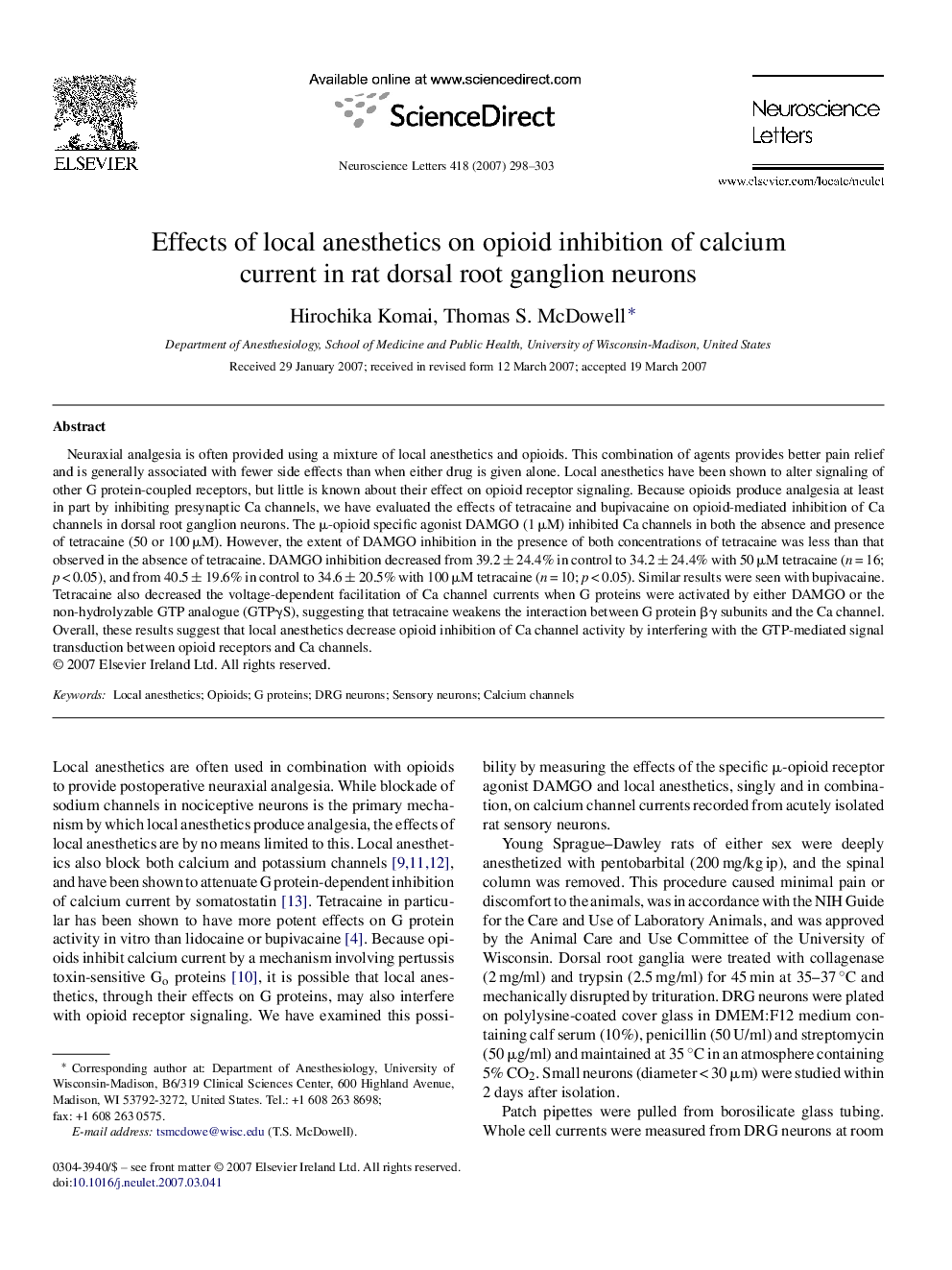| Article ID | Journal | Published Year | Pages | File Type |
|---|---|---|---|---|
| 4349647 | Neuroscience Letters | 2007 | 6 Pages |
Neuraxial analgesia is often provided using a mixture of local anesthetics and opioids. This combination of agents provides better pain relief and is generally associated with fewer side effects than when either drug is given alone. Local anesthetics have been shown to alter signaling of other G protein-coupled receptors, but little is known about their effect on opioid receptor signaling. Because opioids produce analgesia at least in part by inhibiting presynaptic Ca channels, we have evaluated the effects of tetracaine and bupivacaine on opioid-mediated inhibition of Ca channels in dorsal root ganglion neurons. The μ-opioid specific agonist DAMGO (1 μM) inhibited Ca channels in both the absence and presence of tetracaine (50 or 100 μM). However, the extent of DAMGO inhibition in the presence of both concentrations of tetracaine was less than that observed in the absence of tetracaine. DAMGO inhibition decreased from 39.2 ± 24.4% in control to 34.2 ± 24.4% with 50 μM tetracaine (n = 16; p < 0.05), and from 40.5 ± 19.6% in control to 34.6 ± 20.5% with 100 μM tetracaine (n = 10; p < 0.05). Similar results were seen with bupivacaine. Tetracaine also decreased the voltage-dependent facilitation of Ca channel currents when G proteins were activated by either DAMGO or the non-hydrolyzable GTP analogue (GTPγS), suggesting that tetracaine weakens the interaction between G protein βγ subunits and the Ca channel. Overall, these results suggest that local anesthetics decrease opioid inhibition of Ca channel activity by interfering with the GTP-mediated signal transduction between opioid receptors and Ca channels.
